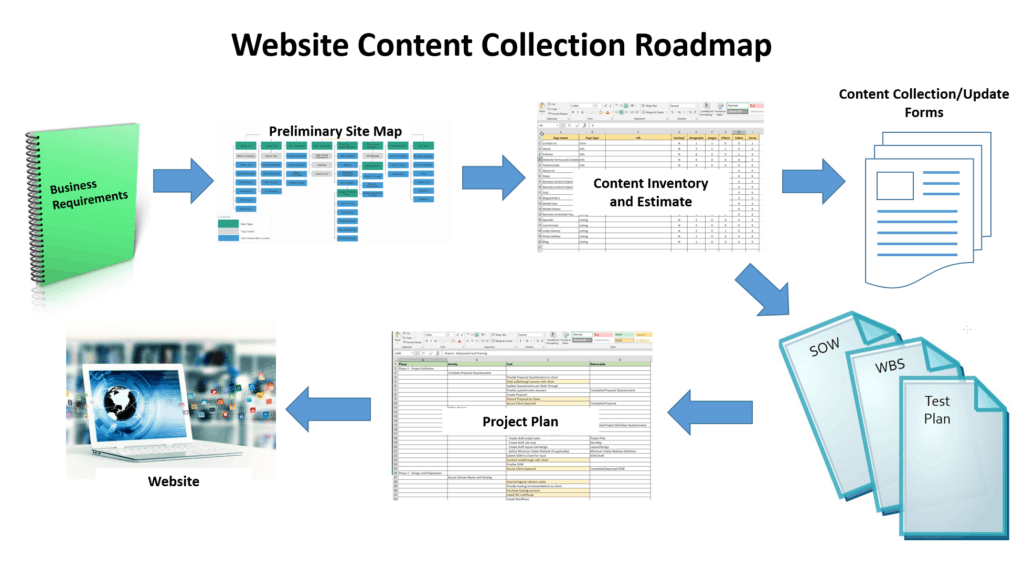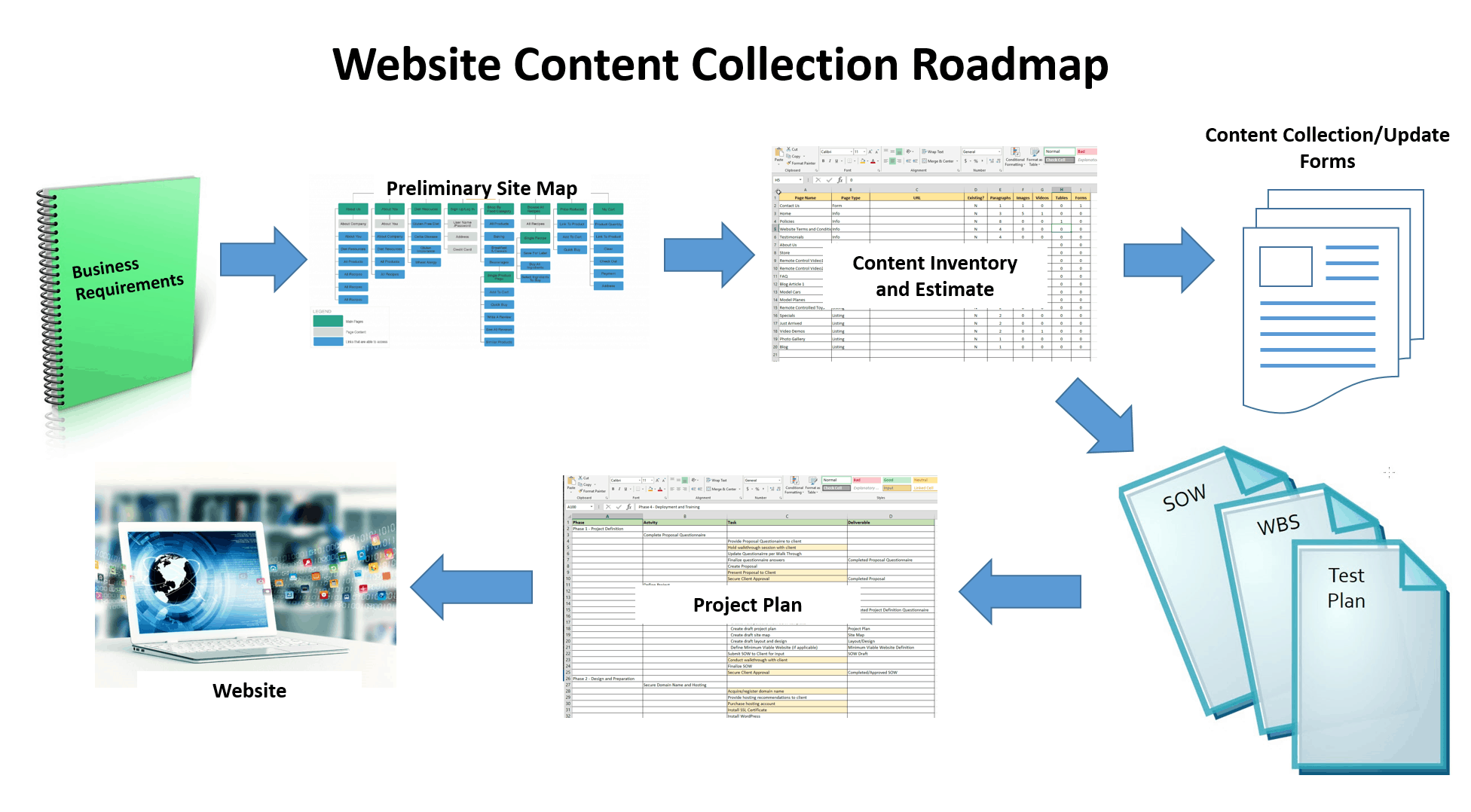7 Steps to Estimating WordPress Website Content
I read an article recently that stated the opinion that “content-first” is a bad WordPress website strategy because it doesn’t consider the first purpose of a business website… to make money. The premise of the article was that a “marketing-first” approach is necessary.
This is hogwash. Whether using a design-first or a content-first approach, the runway to get there is ALWAYS a thorough examination of the BUSINESS requirements. The idea that you can even begin to create or gather content without business requirements is ludicrous.
Now, if you’ve been following me anytime at all, you know I am a huge proponent of a content-first approach to defining a WordPress website project primarily because of how it helps prevent scope creep. For more information on that topic, see this article.
But either way, when it’s time to estimate the content-related activities, we’ve found these 7 steps are required to get the most precise estimate possible.

-
Determine the Business Requirements
I use a proposal questionnaire to determine preliminary business requirements and for content purposes, a list of the pages (including posts and products) that are needed. Note – our proposal questionnaire is a fillable PDF that you can download and use with your clients.
-
Create a Preliminary Site Map
Whether the project is for a new website or updating an old site, I really like slickplan.com for creating site maps. If you only use the tool for this purpose, you can get away with a free account but you might want to consider a paid account if you want to use the tool to collect content from the client. (more about that in a sec)
If you’re entering a sitemap from scratch, it is really intuitive to use and they have lots of help videos. If you’re updating an existing site, slickplan will actually automatically create your initial site map by crawling the existing site and then you can make changes. Please note that these are affiliate links but I would never recommend a product I don’t use myself!
Here’s a video on their site that shows how to use the site crawler.
-
Create the Content Inventory
This involves translating the sitemap into a list of pages, organized by page type, and then giving a ballpark estimate of the number of content elements for each page. For example, for each page, you will probably want to estimate the number of paragraphs, images, videos, forms, and tables as a minimum. You’ll also want to note which content already exists and what needs to be created.
-
Create a Rough Order of Magnitude (ROM)
Totaling the number of pages, paragraphs, images, videos, forms, and tables, and categorizing it by the content that already exists and that which needs to be created, will give you the rough order of magnitude estimate.
Very soon I will have available for download, the Content Catalog and Estimation Tool that will automatically calculate your content rough order of magnitude.
-
Determine Who Will Create/Gather Content
Content can be created or gathered by you, the client, or a 3rd party hired by you or the client. I typically determine, on a project-by-project basis, who will carry out this task and then estimate accordingly. If it is clear to me the client does not have the resources or skills to do this or if history indicates they are less-than-responsive, I will usually try to convince them of an alternate approach or starting with a minimum viable website.
When I release the Content Collection Roadmap for WordPress Projects in the next couple of weeks, it will include more of what you need to consider when making this decision. Stay tuned…
-
Translate ROM to Man-Hours
This is a matter of estimating how long it is going to take the resource to create or gather each content element type and making the calculations to determine man-hours. For example, if you have 2 videos that need to be created and you estimate each video will take 8 man hours, the total man hours for videos would be 16.
You can use the Content Catalog and Estimation Tool, when it is released, to semi-automate this task or you can create your own spreadsheet.
-
Estimate the Time and Cost for Content
Once you’ve calculated the man-hours and determined who will complete the content-related activities, you can assign an hourly rate to each content-related activity and multiply it by the man-hour estimate to determine your preliminary COST estimate for the content and add this to the project defining documents.
Time estimates should consider who is carrying out the activity and if it is anyone other than the client, at least one review cycle should be included as well as the approval activity. Time estimates should be reflected in the project-defining documents and project plan.
Conclusion
A good content estimating strategy is essential to properly defining and estimating a WordPress website or any other type of website development project. Whether using a content-first or design-first approach, these 7 steps can be used to provide a preliminary estimate for your WordPress proposal.

